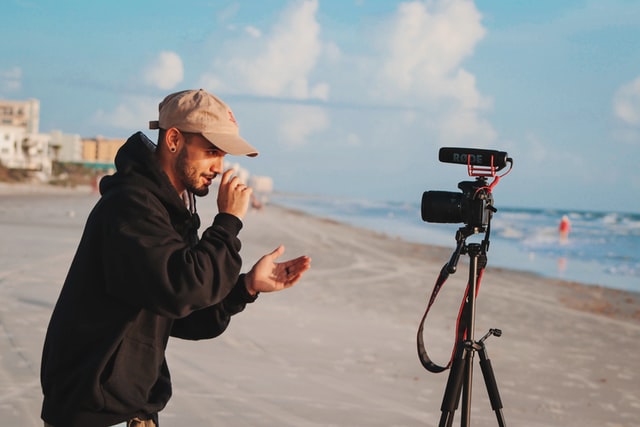Social media has seen a rise in short-video services in the past few years. From Musical.ly to Snapchat and Instagram, users can connect with their friends and family through a more visual platform.
And while these apps have continued to grow in popularity, one such service has unfortunately ended. Vine was an American short-form video hosting service where users could share six-second-long looping video clips.
Vine tasted colossal success initially. A year after launch, Vine became the most downloaded free app within the iOS App Store. Vine was able to attract different types of uses, including short-form comedy and music performances, video editing, and stop motion animation. A BBC review even described collections of Vine videos as “mesmerizing”, like “[watching a] bewildering carousel of six-second slices of ordinary life [roll] past.
Then on October 25th, 2017, Vine announced that it would permanently shut down its website and mobile app.
Even though this news shocked many of its users, it’s not uncommon for startups to shut down after failing to reach their intended goals or find another service that can better suit their needs. With that said, let’s look at what happened to Vine and why Vine shut down.
Twitter acquired Vine in 2012.
Initially founded by Dom Hofmann, Rus Yusupov, and Colin Kroll in June of 2012, Twitter acquired Vine six months later for a reported $30 million. Vine was one of the fastest-growing social networks at the time and had amassed roughly 12 million users.
Twitter’s goal was to expand its reach and improve the user experience. Even though Vine was originally built as a separate service, Twitter decided to merge the two platforms so that users could communicate and share their content across both networks.
Then what happened to Vine? Why did it shut down?
Vines were only six seconds long- probably too short
Vine was meant to provide users with a platform where they could share creative, six-second videos with their friends.
Although there was the option for users to upload longer content, Vine was geared more towards shorter, more casual videos than an app like YouTube, where users could create professional-grade content.
What’s interesting about the six-second mark, however, is that it wasn’t just a random number. It was based on research and science. Researchers have found that the average attention span for humans is only about six seconds.
In other words, people are more likely to pay attention to something short and quick than something long and drawn out. Vine was built with this information in mind and offered quick and easy videos that people could watch while on the go.
Vine probably could not understand that viewers decide in those 6 seconds whether they want to continue or not but don’t watch such short videos. This can be seen from the fact that Instagram reels started with 15 seconds but now allows users to upload 90-second videos. This misunderstanding could have been the reason for failure.
Not being able to understand the trend was the primary reason why Vine shut down.
Rising Competition from established players
The discontinuation of Vine came as many competing platforms introduced their own equivalents to Vine’s short-form video approach. Platforms such as Instagram began to introduce their own takes on the short video angle, such as Instagram Video, where users were able to upload 15-second videos to their profiles.
Marketers leaving the platform was also a large part of the decision by Twitter to discontinue Vine. Many monetary sources began to move to longer short video platforms, followed by many popular Vine creators.
More than half of Vine users with more than 15,000 followers had ceased uploading or deleted their accounts to move on to other platforms such as YouTube, Instagram, and Snapchat.
Not being able to bring innovation to its platform was the second reason why Vine shut down.
Users weren’t actively using the service anymore.
Even though Vine had millions of users, most weren’t actively using the app. Vine had lost over 80% of its users since its peak.
This means that while Vine had millions of users, only a tiny percentage of them were logging into the service and using it regularly. Even though Vine was once a popular social media platform, most users had forgotten about the app.
This led to very little time spent on the service and little revenue for Vine. Vine could never charge its user base to download its content or purchase other paid features.
This was the third reason why Vine shut down, as the app could never generate any income for itself.
It wasn’t easy to find new creators to follow.
When Vine first started gaining popularity, it was easy to find new creators to follow. Users could simply search for a hashtag, click on a profile, and begin following someone new. However, as the app grew in popularity, users began creating more specific hashtags and tagging their posts to make them easier to find.
This made it more difficult to find new creators to follow because users had to know the exact hashtags and tags associated with their content.
Not only that but many users were disheartened by the fact that they couldn’t find new accounts to follow. This meant they felt out of place or as if they didn’t belong on the app.
It also made it difficult to maintain connections with current users because you had to know precisely what they wanted their content to be tagged as. In other words, finding new creators to follow and engage with the app became more difficult.
This was the fourth reason why Vine shut down as users were unable to find new creators to follow. So the app lost the interest of both creators and users.
There were too many restrictions for users and creators.
At some point, Vine decided to put some restrictions in place. This meant that some rules and regulations had to be followed if you wanted to create content on the app.
Vine would then check these rules and regulations and ensure that the creators followed them. In addition to these restrictions and limitations, Vine also had a “no commercial content” rule that prevented users from making money off their videos. These regulations and restrictions made Vine challenging to use, and clear that the app wasn’t built for people who wanted to share their creative content.
Instead, it was built for people who wanted to create humorous or silly videos. Not only that but these restrictions and rules made it difficult to find new users and creators to follow.
This was the final nail in the coffin. A user-generated content platform should give enough freedom to creators and users to bring engagement. After all these reasons, it’s a no-brainer that Vine was meant to shut down.
Final Thoughts
Social media networks always come and go due to a lack of interest or internal struggles. When Vine shut down, it was shocking because not many people had expected it.
Vine was a huge part of the social media scene in its heyday, but the app and website were ultimately shut down in October 2017. While the reasons why Vine shut down were many, it makes sense that the company would want to cut its losses and end the service.
And although Vine is no longer operational, it’s essential to remember that social media is a constantly evolving landscape. New apps and websites are popping up all the time to give users more exciting ways to connect.
TikTok’s and Instagram reels’ success is just an example of that.









